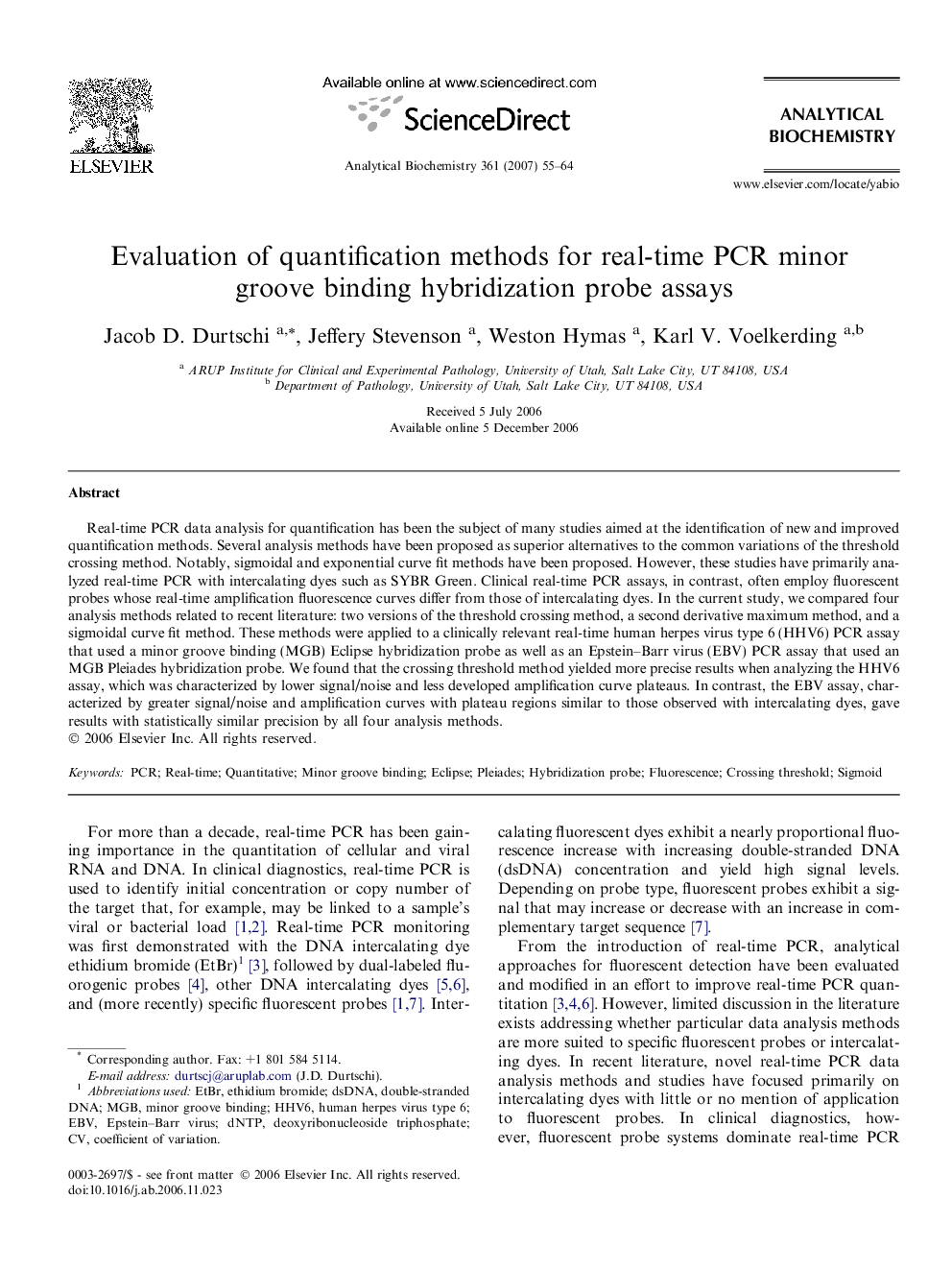| Article ID | Journal | Published Year | Pages | File Type |
|---|---|---|---|---|
| 1176367 | Analytical Biochemistry | 2007 | 10 Pages |
Real-time PCR data analysis for quantification has been the subject of many studies aimed at the identification of new and improved quantification methods. Several analysis methods have been proposed as superior alternatives to the common variations of the threshold crossing method. Notably, sigmoidal and exponential curve fit methods have been proposed. However, these studies have primarily analyzed real-time PCR with intercalating dyes such as SYBR Green. Clinical real-time PCR assays, in contrast, often employ fluorescent probes whose real-time amplification fluorescence curves differ from those of intercalating dyes. In the current study, we compared four analysis methods related to recent literature: two versions of the threshold crossing method, a second derivative maximum method, and a sigmoidal curve fit method. These methods were applied to a clinically relevant real-time human herpes virus type 6 (HHV6) PCR assay that used a minor groove binding (MGB) Eclipse hybridization probe as well as an Epstein–Barr virus (EBV) PCR assay that used an MGB Pleiades hybridization probe. We found that the crossing threshold method yielded more precise results when analyzing the HHV6 assay, which was characterized by lower signal/noise and less developed amplification curve plateaus. In contrast, the EBV assay, characterized by greater signal/noise and amplification curves with plateau regions similar to those observed with intercalating dyes, gave results with statistically similar precision by all four analysis methods.
